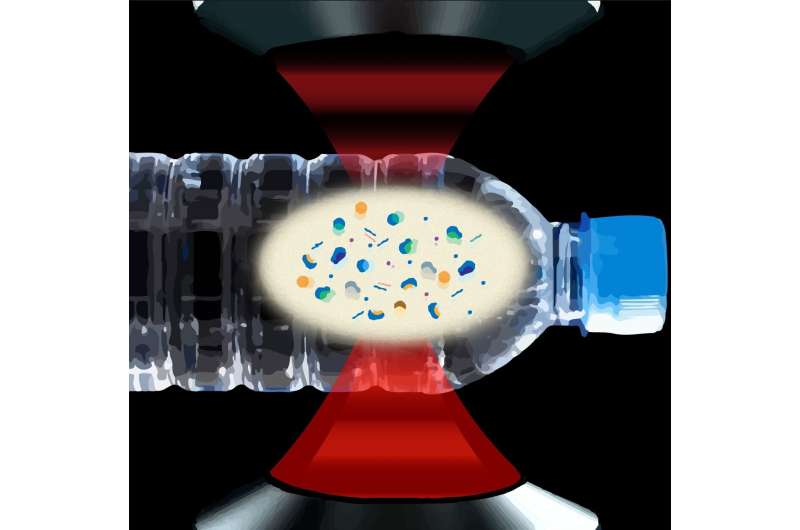
In recent years, there has been rising concern that tiny particles known as microplastics are showing up basically everywhere on Earth, from polar ice to soil, drinking water and food. Formed when plastics break down into progressively smaller bits, these particles are being consumed by humans and other creatures, with unknown potential health and ecosystem effects.
Now, using newly-refined technology, researchers have entered a whole new plastic world: the poorly known realm of nanoplastics, the spawn of microplastics that have broken down even further.
Microplastics are defined as fragments ranging from 5 millimeters (less than a quarter inch) down to 1 micrometer, which is 1 millionth of a meter, or 1/25,000th of an inch. (A human hair is about 70 micrometers across.) Nanoplastics, which are particles below 1 micrometer, are measured in billionths of a meter.
For the first time, they counted and identified these minute particles in bottled water. They found that on average, a liter contained some 240,000 detectable plastic fragments—10 to 100 times greater than previous estimates, which were based mainly on larger sizes.
Nanoplastics are so tiny that, unlike microplastics, they can pass through intestines and lungs directly into the bloodstream and travel from there to organs including the heart and brain. They can invade individual cells, and cross through the placenta to the bodies of unborn babies. Medical scientists are racing to study the possible effects on a wide variety of biological systems.
Worldwide plastic production is approaching 400 million metric tons a year.
Unlike natural organic matter, most plastics do not break down into relatively benign substances; they simply divide and redivide into smaller and smaller particles of the same chemical composition. Beyond single molecules, there is no theoretical limit to how small they can get.
The researchers tested three popular brands of bottled water sold in the United States (they declined to name which ones), analyzing plastic particles down to just 100 nanometers in size.
They spotted 110,000 to 370,000 particles in each liter, 90% of which were nanoplastics; the rest were microplastics.
A somewhat disturbing thought: the seven plastic types the researchers searched for accounted for only about 10% of all the nanoparticles they found in samples; they have no idea what the rest are. If they are all nanoplastics, that means they could number in the tens of millions per liter.